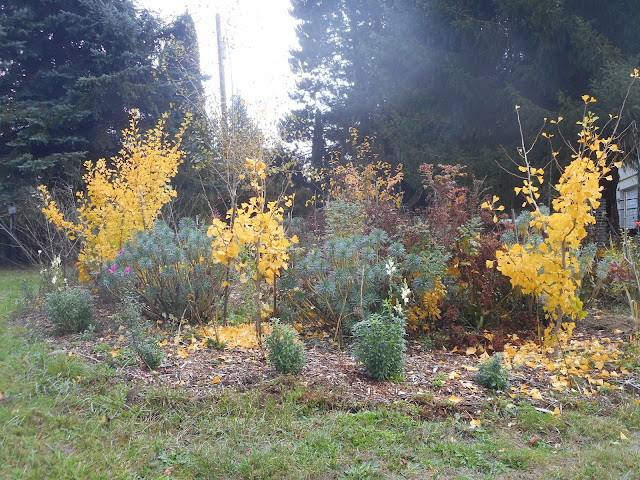During the cold winter season, there is more time to ponder what I will do next year. I gave up on 2 peaches - Indian Free - no peach in about 8 years of growing it, and Oregon Curl Free - probably 75% killed by canker. I don't want it to be a reservoir of disease for others. If it's only going to bear one year then succumb to disease, why bother? It could be the rootstock.
Citation seems to be canker-prone. Peaches are hard to graft, or I might have tried to salvage some scion. Removing them now will give me a change to clean up the locations.
Current thoughts, subject to change. Photos are just old illustrations, not meant to depict these varieties.
 |
| Image via vintageprintable.com |
Apples. Links are to descriptions, I haven't decided on sources yet.
Add one tree, Winecrisp.
Starks states, "Disease-resistant to scab, fire blight, and powdery mildew. Stores up to nine months." A PRI co-op disease resistant variety.
Orange Pippin states very good flavor.
Science Daily fluff article in 2009 states "More than 20 years in the making".
Add some grafts. None of these are patented. "I've given priority for disease resistance and complex flavors, but also some historic types. Growing them might be the only way I ever taste them.
Sweet-16. From University of Minnesota, a source of many good varieties including Honeycrisp, SweeTango®, and Zestar®. "Crisp and juicy with an exotic yellow flesh and a very sweet, unusual
sugar cane or spicy cherry candy flavor. The fruit stores for 5 to 8
weeks. Tree is very vigorous and fruit may be subject to premature
drops. Introduced in 1977." Various websites state Sweet-16 has spicy flavor notes and is vigorous and disease resistant.
 |
| Image via vintageprintable.com |
GoldRush.
Another PRI co-op apple. Disease resistant, vigorous, long keeper. GoldRush was
designated by the State of Illinois as the state apple - good marketing my University of Illinois.
A low-ethylene producer, which helps in longer storage.
Baldwin - a
very, very old heritage variety, not much grown now. Triploid, like Jonagold, so needs a pollinizer but can't serve as one. Not a problem on multigraft. Origin in the late 1700s - Wikipedia states around 1740, no special disease resistance, I just want a taste of the past. Spur bearing. Exceptionally good pie apple.
Newtown Pippin. Another very, very old variety. Grown by Thomas Jefferson, George Washington, and Benjamin Franklin. Origin in late 1700s. Spur bearing.
Most of the NY harvest goes to Martinelli's sparkling cider. I tasted some locally grown Newtown Pippins, made a pie, it was very good. Mostly it's the idea of a more-than-200-year-old variety. Nothing notable as far as disease resistance.
Milo Gibson - a hobbyist apple Reported as "licorice flavored with hints of banana" . Not much info on this one but the flavor sounds interesting.
 |
| Image via vintageprintable.com |
Euro Plums. I will use scion for grafting, not adding new trees.
Mt. Royal. Self pollinating, heavy producer. Developed in Quebec prior to 1903, so a heritage variety. I want to replace most of my unidentified plum with something that produces and tastes better. I can overgraft it with these.
Seneca. Large Red Plums, from NY Exp station 1972. Reportedly good for Pacific NW.
Hybrid, Asian/American Plums. These are some notes I had written down, but some info
summarize here. Primarily for multigrafts. A couple of new trees, on Hollywood / cerasifera / myrobalan root stock I have already grown.
Pembina. Hansen, 1923. Dark red plum, yellow flesh, juicy sweet heavy yield.
Superior - large golden plum that blushes pink.
Waneta - Yellow blushed, red fruit. Hansen, 1913.
Pipestone. Prunus salicina X Prunus americana "Wolf". U. Minn 1942. Needs pollinator.
I need something else to obsess over. I've driven these plans into the ground.




























